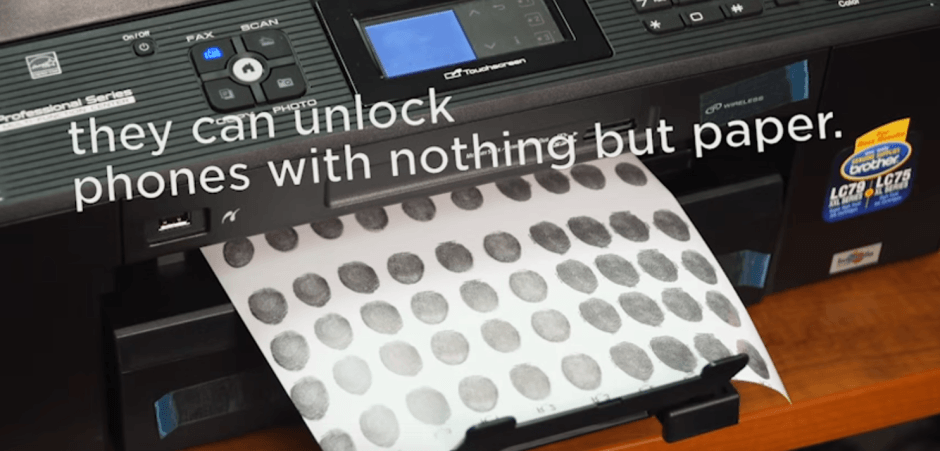Smartphone fingerprint scanners fooled by inkjet printer
Your fingerprint is supposed to be the most secure method of locking your smartphone, but that’s not the case if your device can be easily fooled.
Researchers have been able to hack those from Samsung and Huawei using only an inkjet printer and conductive ink.
“Your fingerprint is one of the best passwords in the world,” said Apple’s Dan Riccio when the company introduced Touch ID, the fingerprint scanner that kickstarted a generation of smartphones with fingerprint scanners, in September 2013.
That may be the case if you use an iPhone, but it seems other devices aren’t quite as good at keeping the bad guys out. Using fingerprints printed from capacitive ink, researchers at Michigan State University were able to fool those used by Samsung and Huawei.
The researchers began by taking high-resolution scans of the smartphone owner’s fingerprint, then printing it onto conductive paper using AgIC conductive ink.
“We enrolled the left index finger of one of the authors and used the printed 2D fingerprint of this left index finger to unlock the fingerprint recognition systems in these phones. We tried several fingers of different subjects and all of them can successfully hack these two phones.”
The Huawei Honor 7 was slightly harder to unlock, requiring more attempts — but Samsung’s Galaxy S6 was much easier to get into. The unlocking process is demonstrated in the video below.
Of course, without access to a high-resolution scan of your fingerprint, it’s difficult for a hacker to use this trick to gain access to your device. But this is proof that some smartphone fingerprint scanners can be easily fooled.
- SourceMichigan State University
- ViaSoftpedia



